Menu
Split and Dubrovnik
| Our first stop in Croatia was at Split to see Diocletian's palace. (Check off another bucket list site for Pat.) The palace was built for the Roman Emperor Diocletian about 300 AD. About a third of modern-day Split is built either up against the walls of the palace or on the adjoining streets. | |
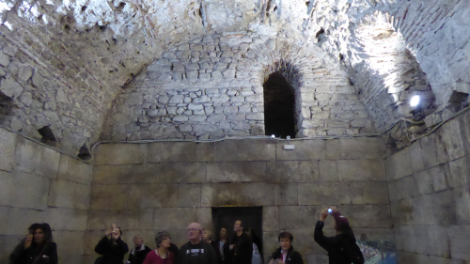 |
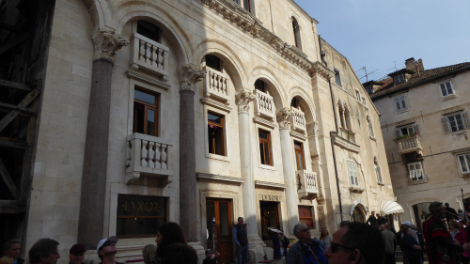 |
| Although it is called a "Palace" it is really more like a castle, with underground storage for food and water and a high wall around it. | The inside is a series of courtyards. |
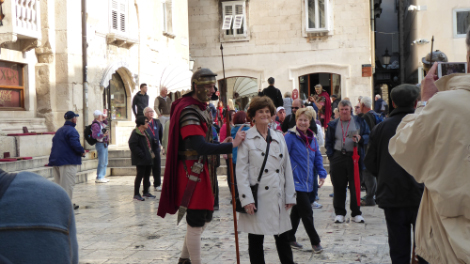 |
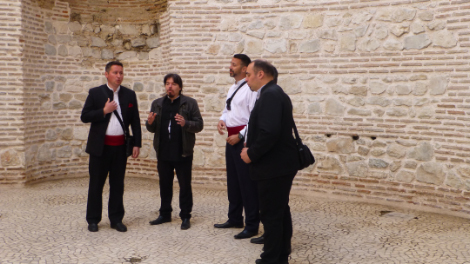 |
| Naturally there had to be tourist opportunities, like getting your picture taken with a "Roman soldier." | Much more to our taste was a group called Klapa, singing lovely traditional Dalmatian music a capella. |
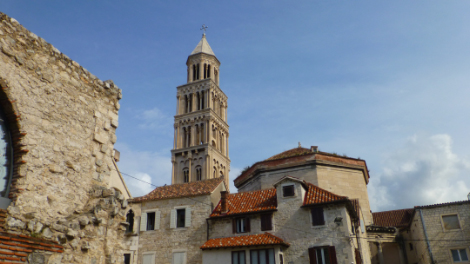 |
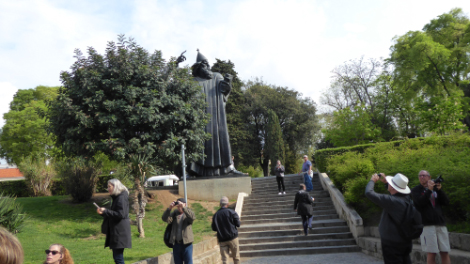 |
| While most of the interior of the palace has been left alone, there are post-Roman buildings all along the outside, including the requisite church (even though Diocletian persecuted Christians!). | In the peristyle (entryway) of the palace is a statue of Gregory of Nin, a bishop who defied Rome in 926 by preaching in the local Croatian dialect instead of Latin. |
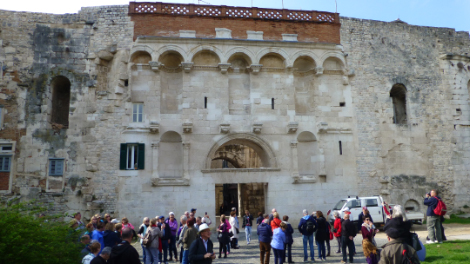 |
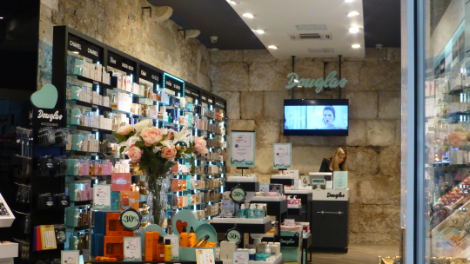 |
| The view of the palace from the peristyle. | The outside of the palace is lined with shops where the back wall of the shop is actually the ancient palace wall. |
 |
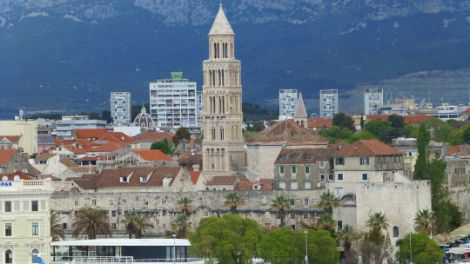 |
| The town of Split has grown, mostly through tourism, but is still centered on its waterfront esplanade, lined with palm trees. | From the ship the palace is almost hidden by the medieval and modern buildings that cluster around it. |
| Our second stop in Croatia was in Dubrovnik, a famous medieval walled city. | |
 |
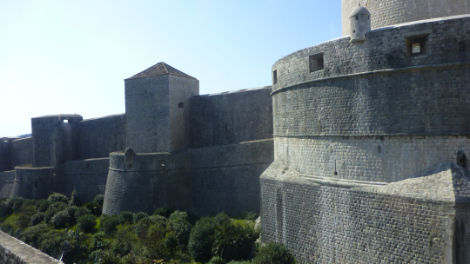 |
| Seen here from above, Dubrovnik is a jumble of red roofs within the city walls. More modern development hugs the hills above. | The 16th century massive walls were built to withstand almost any attack, although the town sustained heavy damage from modern artillery in 1991. |
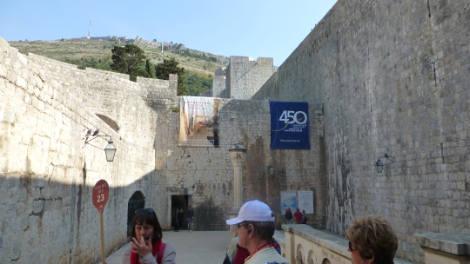 |
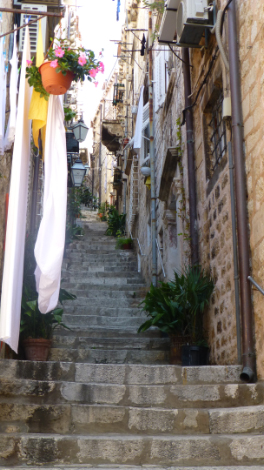 |
| Entry to the town is still through a twisting causeway designed to prevent a frontal attack on the gates. | Dubrovnik is actually in a deep valley, with a central main street running its length with steep side "streets" leading to walkways that parallel the main street in a kind of grid pattern. |
 |
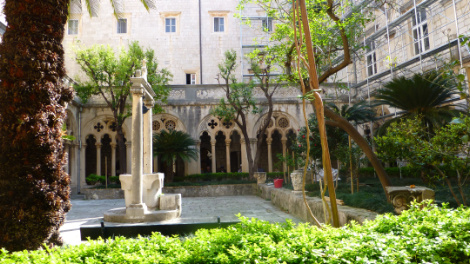 |
| At one end of the main street is the Dominican Monastery, which is famous for its Gothic-style cloisters. Even on a hot day, the cloisters are a cool and quiet place to relax. | |
 |
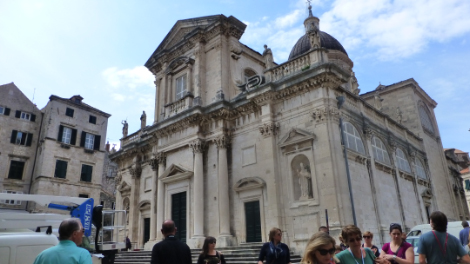 |
| Inside the cloister is a well to provide a steady supply of water. On the walls behind you can see the original Gothic archways with later additions above. | Dubrovnik Cathedral. Very impressive from the outside; unfortunately, it was closed. Legend has it that the first church here was built by Richard the Lion-Hearted on his way back from the Crusades. |
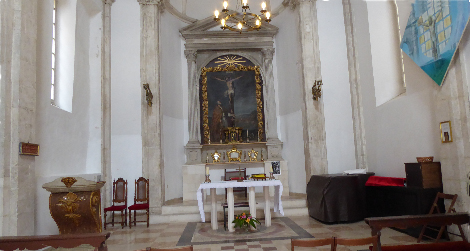 |
 |
| The St. Saviour Church is one of the few buildings that survived the 1667 earthquake that destroyed most of the town. Our guide said that it is only open on April 6, the date of the quake. We were there on...April 6! | A thought for the day. Every day. |
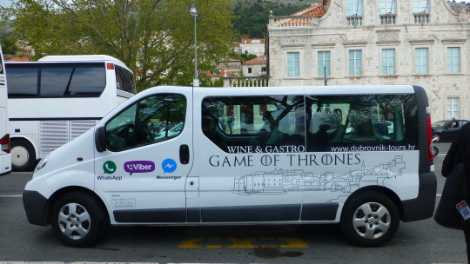 |
|
| Game of Thrones fans may have recognized parts of Dubrovnik, where many of the scenes were filmed. The local tourism industry caters to that: wine, food, and Game of Thrones tours abound. | |